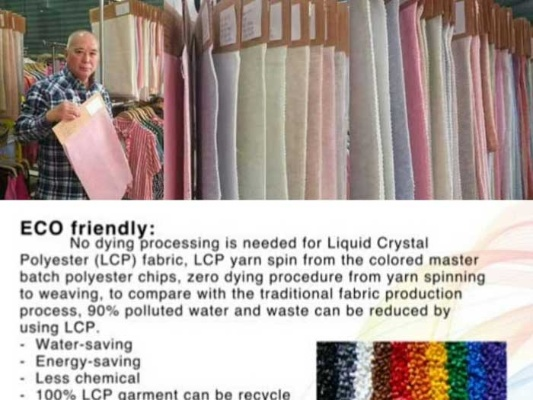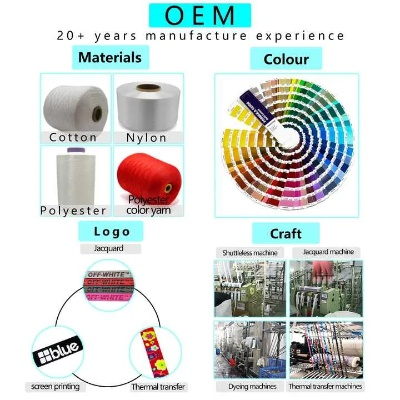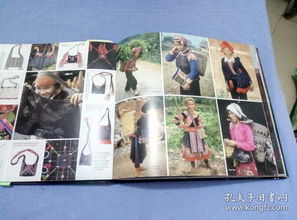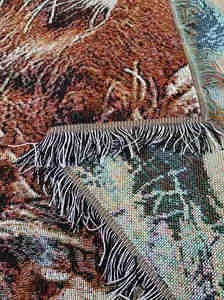The Science Behind Textile Sensory Quality Assessment
The Science Behind Textile Sensory Quality Assessment,Textile sensory quality assessment is a crucial aspect of the textile industry, as it directly affects consumer perception and satisfaction. In this study, we explore the scientific principles underlying the sensory evaluation of textiles, including the use of color, texture, and pattern. We examine how these factors are measured and analyzed using various techniques such as visual inspection, tactile testing, and sensory analysis. Additionally, we discuss the role of sensory evaluation in predicting product performance and consumer behavior. Overall, our research provides a comprehensive understanding of the science behind textile sensory quality assessment and its implications for the textile industry.
Introduction: Textiles are an integral part of our daily lives, providing comfort, style, and functionality. However, the quality of these products can vary greatly depending on various factors, including the materials used, manufacturing processes, and end-use conditions. To ensure that textiles meet consumer expectations and meet regulatory standards, sensory quality assessment is crucial. This article will explore the principles behind sensory quality assessment in the field of textiles and provide insights into how it can be applied to different types of textiles.
Sensory Quality Assessment in Textiles: Sensory quality assessment is a comprehensive process that involves evaluating the physical, chemical, and sensory properties of textiles. It is based on human perception and involves testing textiles under controlled conditions to determine their suitability for use in specific applications. In the context of textiles, sensory quality assessment focuses on evaluating factors such as color, texture, fabric weight, shape, and pattern.
Color Assessment: Color is one of the most important sensory attributes of textiles. It affects the overall appearance, feel, and value of the product. Color assessment involves measuring the intensity, hue, chroma, and saturation of colors using spectrophotometers and other instruments. For example, a textile with a high level of brightness and vibrancy may be considered more appealing than one with duller or muted colors.
Texture Assessment: Texture refers to the three-dimensional characteristics of a material, including its hardness, softness, smoothness, and pliability. Texture assessment involves evaluating the surface characteristics of textiles using tools such as texture analyzers and profilometers. For instance, a textile with a smooth and even surface may be perceived as more luxurious and comfortable than one with rough or bumpy surfaces.

Fabric Weight Assessment: Fabric weight refers to the amount of yarn or fibers per square inch of a textile. It affects the durability, breathability, and drape of the fabric. Fabric weight assessment involves measuring the weight of textile samples using a digital balance. For example, a lightweight fabric may be more suitable for summer wear while a heavyweight fabric may be better suited for winter clothing.
Shape Assessment: Shape refers to the overall shape and form of a textile. It affects its aesthetic appeal and functionality. Shape assessment involves evaluating the dimensions and proportions of textile samples using calipers and rulers. For example, a textile with a curved or rounded shape may be more visually appealing than one with a straight or angular shape.
Pattern Assessment: Pattern refers to the design elements present on a textile, such as stripes, checks, polka dots, and floral patterns. Pattern assessment involves evaluating the visual impact of these elements on the overall appearance of the textile. For example, a textile with a bold and eye-catching pattern may be more attractive than one with a subtle or minimalistic design.
Application of Sensory Quality Assessment in Different Types of Textiles: Sensory quality assessment is not limited to just one type of textile. It can be applied to a wide range of materials, including cotton, polyester, wool, silk, and blended fabrics. Here are some examples of how sensory quality assessment can be applied to different types of textiles:
Cotton: Cotton is a popular textile material that is known for its softness, breathability, and natural feel. Sensory quality assessment involves evaluating the color, texture, fabric weight, shape, and pattern of cotton fabrics. For example, a textile with a vibrant and lively color palette may be more appealing to consumers who prefer bright and eye-catching designs.
Polyester: Polyester is a synthetic fiber that is known for its durability, strength, and resistance to wrinkling. Sensory quality assessment involves evaluating the color, texture, fabric weight, shape, and pattern of polyester fabrics. For example, a textile with a sleek and modern design may be more appealing to consumers who prioritize functionality over aesthetics.
Wool: Wool is a natural fiber that is known for its warmth, softness, and breathability. Sensory quality assessment involves evaluating the color, texture, fabric weight, shape, and pattern of wool fabrics. For example, a textile with a cozy and inviting color palette may be more appealing to consumers who prioritize comfort over fashion trends.
Silk: Silk is a natural fiber that is known for its luster, shine, and elegance. Sensory quality assessment involves evaluating the color, texture, fabric weight, shape, and pattern of silk fabrics. For example, a textile with a delicate and elegant design may be more appealing to consumers who prioritize beauty over practicality.
Blended Fabrics: Blended fabrics refer to textiles that combine two or more different materials to create unique properties and aesthetic appeal. Sensory quality assessment involves evaluating the color, texture, fabric weight, shape, and pattern of blended fabrics. For example, a textile with a blend of cotton and polyester may be more versatile and adaptable to different climates and activities than a single-material textile.
Conclusion: Sensory quality assessment is an essential aspect of textile production and consumption. By understanding the sensory attributes of different textiles and applying sensory quality assessment techniques, manufacturers can produce products that meet consumer expectations and meet regulatory standards. In conclusion, sensory quality assessment plays a critical role in ensuring the quality and appeal of textiles, making them a valuable tool for both industry professionals and consumers alike.
纺织品是日常生活中不可或缺的商品,其品质直接关系到人们的穿着舒适度和安全性,为了确保纺织品的质量和安全性,进行纺织品感官检验是必不可少的步骤,本篇文章将围绕纺织品感官检验原理展开讨论,并通过案例分析进一步说明。
纺织品感官检验原理
纺织品感官检验原理主要包括以下几个方面:
-
观察法:通过观察纺织品外观、质地、颜色等特征来判断其质量,观察纤维的粗细、光泽度、颜色是否均匀等。

-
手感法:通过触摸纺织品,感受其手感,判断其质地和舒适度,手感柔软、光滑的纺织品通常质量较好。
-
气味法:通过闻纺织品气味来判断其质量,纺织品的气味与其材质、工艺等因素有关。
-
仪器分析法:利用仪器设备进行检测,如织物密度测试仪、纤维成分分析仪等,对纺织品进行定量和定性的检测。
案例分析
以某品牌纺织品为例,进行案例分析:
观察法应用案例
该品牌的一款丝绸面料,经过感官检验后发现,其质地柔软、光滑,色泽鲜艳,无明显瑕疵,消费者反馈良好,认为该面料质量上乘,通过观察法,可以快速判断出该丝绸面料的品质。
手感法应用案例
该品牌的一款棉质衬衫,手感舒适,柔软且富有弹性,消费者对其舒适度和质地表示满意,通过手感法,可以更直观地感受到产品的质量。
感官检验案例分析总结
通过感官检验案例分析可以看出,纺织品感官检验原理主要包括观察法、手感法和气味法等,在实际应用中,可以根据不同纺织品的特点和需求,选择合适的检验方法,为了提高检验的准确性和可靠性,可以采用多种检验方法相结合的方式进行检验。
纺织品感官检验案例中还可以加入一些具体的案例说明,某品牌的一款高档羊毛衫,采用天然羊毛制成,手感柔软、细腻,色泽自然,通过气味法检测,发现其具有浓郁的羊毛香气,符合高品质羊毛衫的标准,还可以通过仪器分析法对纺织品进行定量和定性的检测,如密度测试仪等设备的应用,可以更准确地判断出纺织品的材质和工艺。
纺织品感官检验是确保纺织品质量的重要手段,通过观察法、手感法和气味法等多种方法的应用,可以快速判断出纺织品的品质和性能,在实际应用中,可以根据不同纺织品的特点和需求,选择合适的检验方法,为了提高检验的准确性和可靠性,可以采用多种检验方法相结合的方式进行检验,在感官检验过程中,还需要注意一些细节问题,如保持环境清洁、操作规范等。
纺织品感官检验原理是确保纺织品质量的重要保障,通过不断学习和实践,可以提高纺织品感官检验水平,为消费者提供更好的产品和服务。
Articles related to the knowledge points of this article:
Navigating the Complexities of Textile Warehouse Design
Strategies for Degrading Formaldehyde in Textile Products
The Fabric of Success:Navigating the World of Nantong Anton Textiles
Exploring the Global Market with Wuxi Fengyi Textiles
Exploring the Beauty and Durability of Yishu Li Textile Factory


